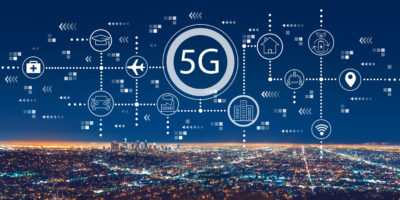The mobile industry will need an average of 2 gigahertz of mid-band spectrum this decade to meet the UN’s International Telecommunications Union (ITU) data speed requirements. Achieving this will also minimize environmental impact and lower consumer costs of 5G, according to a global study of 36 cities published today by the GSMA, which was conducted by Coleago Consulting. Without the additional spectrum, it will be impossible to realize the full potential of 5G in some cases, according to GSMA.
“Additional mid-bands spectrum for 5G would enable mobile operators to deliver the ITU-R IMT-2020 specifications, notably the user experienced data rates of 100 and 50 Mbps on the downlink and uplink in cities, in an economically feasible manner,” the study said.
Policymakers should license spectrum to mobile operators in harmonized bands, according to the study, such as 3.5 GHz, 4.8 GHz and 6 GHz, to meet the ITU’s requirements by 2030.
The FCC has recognized the importance of mid-band spectrum for the 5G buildout because of its balanced coverage and capacity characteristics. “With our work on the 2.5 GHz, 3.5 GHz, and 3.7-4.2 GHz bands, we will make more than 600 megahertz available for 5G deployments,” the agency said.
The FCC is currently planning Auction 110 of 100-megahertz of spectrum in the 3.45–3.55 GHz band, which will be licensed on an unpaired basis and divided into ten 10-megahertz blocks, Inside Towers reported.
Release 16 of the 5G standard, however, is designed to use a channel bandwidth of 100 megahertz in mid-bands, which is five times the channel bandwidth of 4G. A wide channel provides benefits in terms of spectral efficiency, signalling overhead, physical layer flexibility, latency performance, base station radio and user equipment implementation, according to the study.
“At least a contiguous block of 100 MHz of mid-bands spectrum per operator is needed today and two to three 100 MHz blocks of mid-band spectrum per operator in the longer term are needed to deliver both technical and economic benefits,” the study said.
The C-band auction (3.7-4.2 GHz), which garnered $80.9 billion in bids, was the first auction of exclusive licensed spectrum in the mid-band spectrum for commercial wireless, according to Roger Nichols in Network Computing.
“The United States was the first to define and allocate millimeter-wave (mmWave) bands, and we are the last to allocate mid-band spectrum for 5G,” Nichols wrote. “This comes two years after the 3.5 GHz auctions concluded in South Korea and over 18 months after their first NR commercial launch.”
Nichols goes on to note that Europe, Korea, Japan and China all have exclusive mid-band spectrum licensing to provide greenfield territory for 5G deployments, which he said is much superior to forcing 5G New Radio to share spectrum with LTE using Dynamic Spectrum Sharing.
“Thus, we have the need for exclusive mid-band licenses—especially in the United States. This latest move [the C-band auction] by the FCC is more than welcome,” Nichols wrote.
The additional spectrum will lower the carbon footprint of networks by two-to-three times while enhancing the sustainable development of mobile connectivity, according to the study.
“[Without more spectrum], the number of antennas and base stations needed will lead to higher carbon emissions and consumer prices,” the study said.
Mid-band spectrum will also make 5G more affordable, according to the study. Total costs of 5G will be three- to five-times higher over a decade in cities with a deficit of 800-1000 megahertz of spectrum. Without the spectrum, the additional number of base stations needed will increase deployment costs in each city by $782 million to $5.8 billion.
Mid-band spectrum availability also will enhance Fixed Wireless Access (FWA). The study shows that with the additional 2 GHz, five-times more households will be covered with each base station, allowing affordable high-speed internet to reach beyond the fiber footprint at a fraction of the cost.
“Without this additional spectrum, a denser network would be required and thus the number of cell sites required in those cities to provide the ‘speed coverage’ would increase network cost to a point where it may not be possible to offer a wireless broadband service at a price point that is economically feasible,” the study said.
The World Radiocommunication Conference (WARC) in 2023, is the next opportunity for nations to align their spectrum policies for mid-band solutions for mobile toward the ITU goal of 100 Mbps download speeds and 50 Mbps upload speeds. The GSMA plans to ask regulators to make an average of 2 gigahertz of mid-band spectrum available in the 2025-2030 time frame to guarantee the IMT-2020 requirements for 5G.
“[Regulators should] carefully consider 5G spectrum demands when 5G usage increases,” GSMA said. “Additionally, spectrum decisions should be based on real-world factors, including population density and the extent of fiber rollout, and [WARC should] support harmonized mid-band 5G spectrum (e.g., within the 3.5 GHz, 4.8 GHz and 6 GHz ranges) and facilitate technology upgrades in existing bands.”
By J. Sharpe Smith, Inside Towers Technology Editor





Reader Interactions